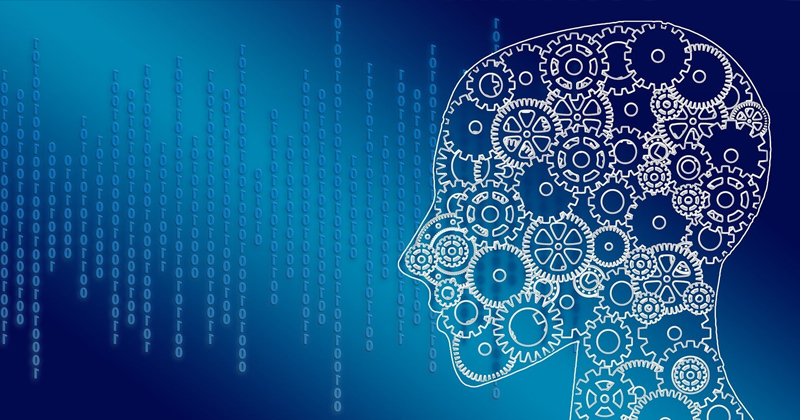
If one is interested in stepping into the field of data science, becoming knowledgeable in many programming languages is a must. This is because no single language can help solve all problems that an organization faces. If the user is not a master of frequently applied languages in data science, then the users' skills will not be thorough. The demand for languages, like Python, began in the 2010s. This increase in the demand for multiple languages came about in the same period as that of the rise of data science. As per Indeed, from 2014 to 2019, Python and data science skills reached the heights of key important ingredients of knowledge. This information/knowledge turned out to be the foundation for having a career in information technology in the 2020s.
The study and work in data science is not the hype of recent years. It is a way to a total rethinking of principles, approaches and method of working with data. This study of data helps both individuals and organizations, thus positively impacting the whole of mankind. Data analytics provides access to non-obvious insights. These insights can be used for any purpose – from facilitating improvements in the organization's efficiency to defeating global problems. Due to this, data science specialists are thought of being in the most promising career of the coming decades. The best technology-inclined minds will also come up with still newer tools for more efficient data and work. In this article, we investigate the top data science programming language, and present the practical capabilities of each of these languages.
Best 6 data science languages – Choosing the source of successThese languages hold wide applicability in the data science world:
1. Python:Python is considered the best language to enter the world of data science. Also, the scope of applying it is not restricted to the analysis of data alone. It offers the user to write a program for tasks related to machine learning. This can be used to make tools and libraries from scratch.
Some important facts
- A total of 66% of data scientists are applying Python daily
- A total of 84% of these data scientists use Python as the primary programming language
- It can be predicted that in the coming times Python will maintain its top position
Pros of Python
- It is considered a universal programming language that permits users to create any project—from machine learning programs to simple applications.
- Python is intuitive and clear. It is, therefore, the best option for beginners.
- All essential and additional tools are present in the public domain.
- Several libraries and add-on modules can help solve most problems using it.
Projects and tasks it’s used for
Python is the best language for projects in which quantitative and analytical calculations are the main features, for example, in the finance discipline. YouTube and Google apply it to improve the internal infrastructure. In addition to this, Forecast Watch comprising of data analytics, uses this language to function with weather data.
2. RR is one of the most important programming languages in the field of data science. It is also the top-most tool for statistical calculations compared to all the others known so far. R is not only a programming language but a complete platform for statistical analysis. It permits its users to work on operations that include mathematical modeling, data processing, and the graphical part.
Some important facts
- Individuals with knowledge of the R language were paid the highest in 2014.
- R is still being used by more than 70% of the total data miners.
- There are more than 2 million users worldwide of the R language.
Pros of R language
- R is open-source and permits its users to work with several operating systems. The R tool is cross-platform.
- The biggest strength of the R language is its statistics. Its built-in functions permit the users to have data visualization ideally.
Projects and tasks it’s used for:
R language can help make a credit card fraud detection system. It can also be used in the sentiments analysis model to get insights into what consumers think about a service or product.
3. Structured Query Language (SQL):SQL is one of the most important tools for working with a huge amount of big data. This is because it has a combination of transactional and analytical capabilities. Also, SQL skills are the most crucial requirement for specialists in data science.
Pros of SQL:
- The most crucial advantage is standardization.
- It provides direct access to data which is possible due to its high speed.
- Flexibility and simplicity of the technology.
- Compliance with the workflow of data science.
Projects and tasks it’s used for
Primarily, SQL is applied for data management in offline as well as online applications. Therefore, the choice of SQL as one of the most efficient languages for data science depends on the project specifications.
4. Java:Java is a high-performance language; therefore, it can be the right choice for writing algorithms in machine learning. In addition to this, it is possible to create a Java code combination with special data science tools.
Some important facts
- Because of its wide area of applicability, Java is one of the most frequently used languages globally, as per the statistics for 2019. It is also important to know that SQL and Python also are a part of this list.
- Java is also considered to be widely applicable for IoT and big data.
- Approximately, 95%of the firms make use of Java for mobile and web application development. But there are no statistics on Java usage for big data and data science. This is so because of the relative novelty of these concepts.
Pros of Java
Java is very attentive to security, which is the most important advantage when working with sensitive data.
Projects and tasks it’s used for
Java is suitable when there is an initial intention to cause integration of the created product with the known solutions.
5. Scala:The most impressive feature of Scala is its capabilities to work on parallel processes when running big data arrays. In addition to this, Scala works on JWM and thus makes available the Java ecosystem. Another good point of Scala is that it is created so that data science users can work on specific operations. This can be done using several different approaches that offer enhanced flexibility, helpful in the developmental process.
Pros of Scale
- Scala is a combination of functional and object-oriented programming language. Because of this, Scala is one of the most suitable programming languages for big data.
- Scala comprises many libraries suitable for data science tasks, such as Vegas, Breeze, and Smile.
Projects and tasks it’s used for
Scala is a great way to go about a project, especially when the amount of data is big enough to know the technology's complete potential. However, with a significantly lesser amount of data, R and Python are considered better languages.
6. Julia:Julia can be considered a new, highly effective and dynamic tool compared to other programming languages for data analysis. In the initial period, Julia was created as a programming language for scientific reasons. It had speed enough to meet the requirements of modeling in an interactive language. It is now working on definitive processing of code in a compiling language such as Fortran or C. This is the real reason why the working of Julia language is ideally done by applying C and Python programming language libraries.
Pros of Julia
- There is no need to have a license to make use of Julia
- Julia's speed while dealing with data is faster than Python, Matlab, JavaScript, R and is slightly weaker in performance to Lua, Go, C and Fortran.
- The strength of Julia is its numerical analysis technology. Julia also goes well with programming for general purposes.
Projects and tasks it’s used for
Julia programming language is ideal for financial projects. In addition to this, it is believed that when Julia completely develops, it will be able to compete with the current top-most languages like Python and R.
Final ThoughtsData science is the discipline of both knowledge and intelligence, where programming languages cultivate the finest roots deep within. The above-explained data science languages can bring home success from the big data world.
































